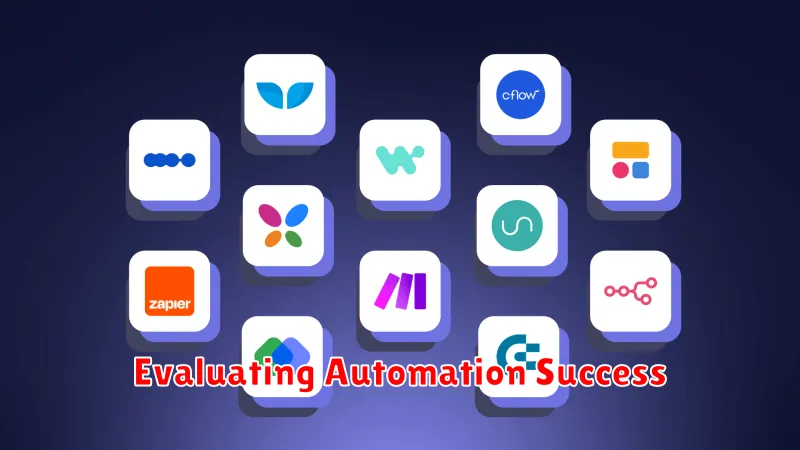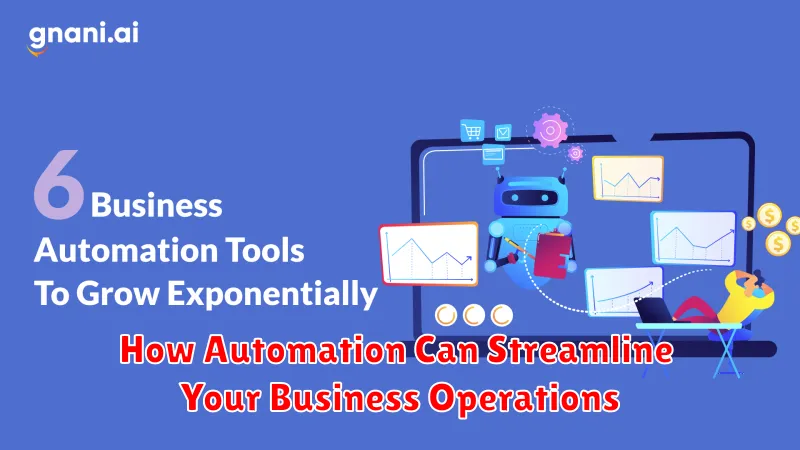In today’s rapidly evolving business landscape, automation is no longer a luxury, but a necessity. Streamlining business operations through automation is crucial for staying competitive and achieving sustainable growth. This article explores how strategically implemented automation can transform your business operations, enhancing efficiency, reducing costs, and improving overall productivity. From automating repetitive tasks to optimizing complex workflows, discover the power of automation to revolutionize your business.
Automation offers a powerful toolkit for businesses seeking to streamline operations and optimize resource allocation. By automating key processes, businesses can free up valuable time and resources, allowing employees to focus on more strategic initiatives. This article delves into the various ways automation can be leveraged to streamline your business operations, including automating marketing efforts, customer service interactions, and back-office tasks. Learn how to harness the potential of automation to drive efficiency and elevate your business to new heights of success.
What Is Business Automation?
Business automation is the use of technology to execute recurring tasks or processes within a business where human intervention is previously required. This can include anything from simple tasks like email marketing to more complex processes like manufacturing or customer service. The primary goal is to increase efficiency, reduce costs, and minimize human error.
Automation relies on predefined rules and workflows to manage and complete tasks. These automated workflows can improve productivity by freeing up employees to focus on higher-value activities that require creativity and strategic thinking. Additionally, automation increases accuracy by reducing the potential for human error and ensuring consistent results.
Key Areas to Automate First
When implementing automation, focus on tasks that are repetitive, time-consuming, and prone to human error. This maximizes impact and delivers rapid ROI.
Consider automating areas like customer service with chatbots for handling frequently asked questions. Marketing automation can streamline email campaigns and social media posting. Invoice processing and payroll are also prime candidates, reducing manual data entry and freeing up staff.
Selecting the Right Automation Tools

Choosing the right automation tools is a critical step in streamlining your business operations. A mismatched tool can hinder rather than help. Consider your specific needs and resources when making your selection.
Begin by identifying the key processes you want to automate. Then, research tools that specialize in those areas. Cost, integration with existing systems, and ease of use are important factors to evaluate.
Don’t be afraid to start with a pilot program to test the effectiveness of a tool before full implementation. This allows you to assess its impact and make adjustments as needed.
Benefits of Automation
Automation offers significant advantages to businesses seeking to optimize their operations. By automating repetitive tasks, companies can reduce operational costs and improve efficiency. This allows resources to be allocated to more strategic initiatives.
Increased productivity is another key benefit. Automated systems can operate continuously, 24/7, leading to higher output and faster turnaround times. This also contributes to improved quality and consistency by minimizing human error.
Furthermore, automation can enhance employee satisfaction by freeing them from tedious tasks and allowing them to focus on more engaging and challenging work. This can lead to better employee retention and overall morale.
Challenges and Solutions
Implementing automation can present certain challenges. Cost is a primary concern, as initial investments in software and hardware can be substantial. Integration with existing systems can also prove complex, requiring careful planning and execution. Furthermore, employee resistance to change is a common hurdle, necessitating clear communication and training.
Fortunately, solutions exist to address these challenges. A phased approach to implementation can mitigate cost concerns, allowing businesses to scale their automation efforts gradually. Utilizing experienced integration specialists can streamline the integration process and minimize disruption. Finally, addressing employee concerns through open dialogue, reskilling opportunities, and showcasing the benefits of automation can foster a smoother transition.
Automation for Customer Support
Automating customer support processes can significantly enhance efficiency and customer satisfaction. By implementing tools like chatbots and automated email responses, businesses can handle a larger volume of inquiries simultaneously. This frees up human agents to focus on more complex issues.
Common applications include:
- 24/7 Availability: Automated systems can provide instant support around the clock.
- Faster Response Times: Reduce wait times and improve initial response speed.
- Personalized Experiences: Tailor responses based on customer data.
These automation tools streamline support workflows, leading to cost reductions and improved customer engagement.
Financial Automation Processes
Financial automation offers significant opportunities to streamline operations and reduce manual effort. This includes tasks such as accounts payable and receivable, reconciliation, and reporting. By automating these processes, businesses can improve accuracy, free up staff for higher-value activities, and gain better control over their finances.
Automating accounts payable, for example, can eliminate manual data entry and invoice processing, minimizing errors and processing time. Automated reconciliation can quickly identify discrepancies, allowing for timely resolution. Automated reporting provides real-time financial insights for better decision-making.
Inventory and Supply Chain Automation
Inventory management is often a complex and time-consuming process. Automation can significantly improve efficiency in this area. Automated systems can track inventory levels in real-time, predict demand, and automatically generate purchase orders when stock runs low.
Supply chain automation extends these benefits further. By integrating with suppliers and logistics providers, businesses can automate the entire procurement process, from order placement to delivery. This reduces lead times, minimizes errors, and optimizes inventory levels across the entire supply chain.
Key benefits include reduced operational costs, improved inventory accuracy, and increased supply chain visibility.
Training Staff on Automation Systems
Implementing automation successfully hinges on proper staff training. Comprehensive training ensures employees can effectively utilize new systems, maximizing the return on investment.
Training programs should cover both technical skills and the impact of automation on workflows. This includes hands-on instruction with the software or machinery, troubleshooting common issues, and understanding new roles and responsibilities.
Effective training strategies incorporate various methods like interactive workshops, online tutorials, and on-the-job mentoring. Regular assessment helps gauge comprehension and address any knowledge gaps. Investing in thorough training minimizes disruption during implementation and empowers staff to embrace the benefits of automation.
Evaluating Automation Success

Measuring the effectiveness of your automation initiatives is crucial. Key Performance Indicators (KPIs) provide quantifiable metrics to track progress and identify areas for improvement. These KPIs should align with your initial automation goals.
Consider metrics such as error reduction rates, processing time improvements, and cost savings. Tracking these metrics allows you to demonstrate the return on investment (ROI) of automation and refine your strategies over time.
Regularly review your automated processes and gather feedback from stakeholders. This iterative approach ensures continuous optimization and maximized benefits from your automation efforts.

